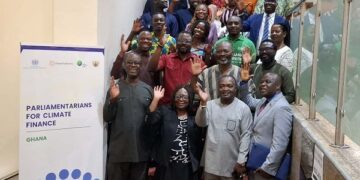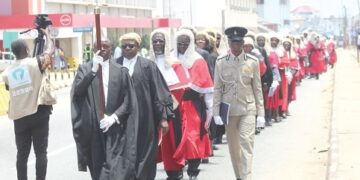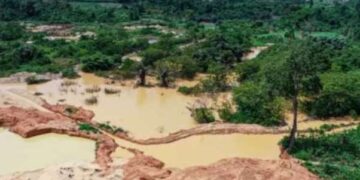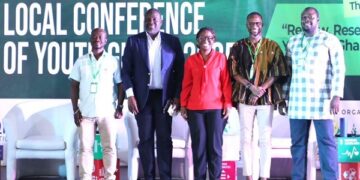ACCRA, Sept 29 (Reuters) – Ghana and Switzerland, with support from the United Nations Development Programme (UNDP), have launched a project to promote climate-smart agriculture and cut methane emissions from rice farming.
The “Promotion of Climate Smart Agriculture Practices for Sustainable Rice Cultivation Project,” also known as the AWD Rice Project, was introduced at an inception meeting in Accra.
It is one of two UNDP-led mitigation initiatives approved under the Ghana–Switzerland bilateral cooperation framework on Article 6.2 of the Paris Agreement.
The project promotes Alternate Wetting and Drying (AWD), an irrigation method that can reduce methane emissions from rice fields by up to 30%, save 30% of irrigation water, and sustain or improve crop yields, according to UNDP.
It will contribute to Ghana’s Nationally Determined Contributions (NDCs) while generating Internationally Transferred Mitigation Outcomes (ITMOs), which Switzerland will purchase under a performance-based climate finance model. By 2030, it aims to reach 11,000 farmers across 242,600 hectares of rice fields, avoiding an estimated 1.3 million tonnes of carbon dioxide equivalent emissions.
Stakeholders at the meeting included the Environmental Protection Authority, the Ministry of Food and Agriculture, the Ghana Irrigation Development Authority, the Ghana Rice Inter-professional Body, and the Council for Scientific and Industrial Research – Savanna Agriculture Research Institute.
“This UNDP Carbon Payment for Development project is more than a climate intervention; it is a research-driven development solution. By scaling the AWD technique, we can cut methane emissions, improve farmer livelihoods, and demonstrate how high-integrity carbon markets can drive sustainable development,” said Dr. Abdul-Razak Saeed, UNDP Ghana’s head of environment and climate.
Participants discussed monitoring and verification systems, field demonstrations, and safeguards to ensure inclusive and sustainable delivery. They reaffirmed their commitment to the project, describing it as a model of global cooperation anchored in local realities.






